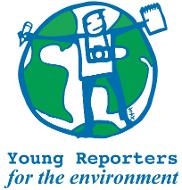Guidelines
and Tips
for Entry
4 Steps to Enter the YRE Competition
Young Reporters for the Environment engages students aged 11-25 in environment-focused citizen journalism, encouraging them to investigate local environmental issues and solutions, and report on them through articles, photos, podcasts or videos.
YRE uses a tried and tested four-step methodology:

1. Investigate
Start by conducting a thorough investigation of the environmental issue that concerns you. Use reliable and credible sources such as scientific papers, government reports, and interviews with local experts to understand the scale of the issue in your local community. Find the important people or groups who are linked to this issue, with different perspectives. Analysing their role, potential biases and critically evaluate information.
See here for video tutorials for creating inspiring articles, photos and videos: http://www.yre.global/video-tutorials/
The following is an example for an entry on litter and waste but the same ideas can be used for any theme including Food Security and Climate Action
.
TIP! Focus on the ‘Hotspots’ for litter: “Litter is Waste in the Wrong Place!”
-
Town centres
-
Routes to schools
-
Fences around schools and garden beds
-
Near shops selling ‘food on the go’
-
Play areas and parks where groups gather
-
Canals, rivers or lakes
-
Railway stations
-
Car parks
-
Shopping areas etc.
In your investigation try to answer these questions:
-
Who was involved?
-
When did it take place / How long has this been going on for?
-
What did people do/think?
-
What did you do in response to this issue?
-
Where did you go to look for information?
-
Why were you concerned? Why did you decide to follow this course of action?
-
How did you get involved?
-
How did people feel?
-
What are the targets of your campaign in your area?
-
What is preventing people from becoming involved?
-
How many people recycle in your neighbourhood?
-
How many recycling bins are there in your neighbourhood?
-
Are there other clean-up projects taking place during the year to tackle litter?
2. Research and Propose Solutions
Propose solutions to the local or national problem or issue that you identified above. Contact environmental organisations, community leaders, and academics to try to find the most effective solutions to your environmental issue. Evaluate each solution critically, considering all potential implications.
-
Having identified a issue in your locality, now it’s time to identify a possible solution.
-
Be sure to evaluate its likely effectiveness, giving reasons for and against (pros and cons)
-
Try not to propose a solution on your own. Use local stakeholders or / and international sources to get knowledge and recommendations on successful campaigns that have worked elsewhere. E.g. Promoting Keep-cups or similar solutions to single use plastics. Developing balanced justifications for your chosen solution requires strategic thinking. You will learn to spot potential challenges, develop counter-suggestions, and present a convincing justification for your solution.
Use your creativity to make things happen.
-
What new product, service or infrastructure could be introduced to tackle the issue?
-
Undertake a survey on recycling rates / energy usage for example at school/at home and identify areas for improvement;
-
Link into other environmental areas – food waste, carbon reduction, marine litter, biodiversity
-
Promote or take part in a waste- reduction event;
-
Promote non-packaging products at local supermarkets.
3. Report
Report on the issue and its possible solution through a journalistic production, targeting a local audience:
-
Identify your target audience and choose the best way to reach and communicate with them, i.e. which media are they most likely to read/watch/listen to?
-
Plan how you will report on the problem and/or issue (who needs to be informed? how? when?) and use the appropriate journalistic format and style
-
Create an article, photograph, video or podcast that documents the litter problem and/or issue; where possible you should suggest a solution
-
Take a positive approach to inspiring change and finding a solution to the litter problem
4. Inform
Share (disseminate) your work to a local audience through the media, e.g. social media, newspaper, magazine, radio, television, exhibition, local events, etc. Creating a communication plan will also help you to choose which media platforms to use to raise awareness and generate community support for your proposed solution. Actively take part in discussions and engage with others who share your interest for environmental responsibility. Remember, your single voice with well-researched information and a clear solution can create a ripple effect of positive change in your community.
Send your entries to yre@eeu.antaisce.org

© Copyright Young Reporters for the Environment